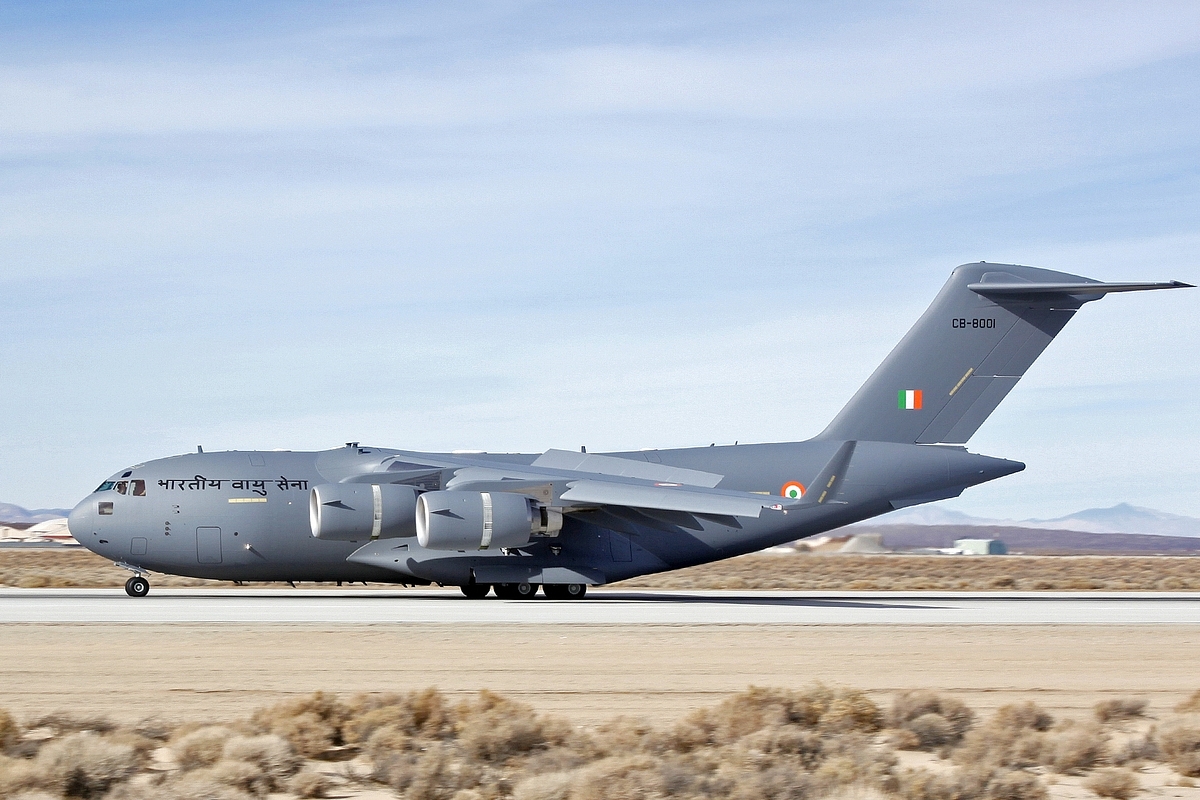Context
Indian Air Force Has To Prepare Short And Swift Wars With Minimum Buildup Time: Air Chief Marshal V R Chaudhari

A C-17 of the Indian Air Force (U.S. Air Force/Jet Fabara)
Addressing a conference on logistics organised by the Maintenance Command of the Indian Air Force (IAF), Air Chief Marshal V R Chaudhari has said that the force has to prepare for short and swift operations.
What the Air Chief said: Air Chief Marshal V R Chaudhari said that the current geopolitical atmosphere necessitates the IAF to be operationally and logistically prepared for a swift response.
The IAF will have to be ready for small but "high intensity operations" with "minimum buildup time", he said, adding that this would require "major changes" in terms of logistics.
At the same time, the IAF will have to prepare for long drawn standoffs "akin to what we are seeing in eastern Ladakh", he added.
He also noted that India would have to develop a plan for the indigenisation of all critical components for atmanirbharta.
Context: Military strategists around the world are of the view that most wars of the future will be swift and intense, and smooth logistics are a critical requirement for a favourable outcome in such conflicts.
In India's case, experts have said that the forces will have to quickly achieve the objectives of a military action they undertake, before diplomatic intervention and pressure forces stalemate.
Due to its fairly vast and diversified inventory of military equipment, strategists believe India may face logistical problems in the event of a crisis that requires a swift response.
With some platforms common between the Indian Army, Indian Air Force and Indian Navy, coupled with the move towards theaterisation and the need for joint operations, India will have to develop a joint logistics structure for operational efficiency.
In 2016, as part of the military reforms introduced under President Xi Jinping, China created a Joint Logistic Support Force to ensure the successful execution of joint operations.
The IAF will play a critical role in providing logistical support, as seen during the crisis in eastern Ladakh in 2020.
During the crisis in Ladakh, the rapid buildup of troops and heavy equipment have been made possible, in large part, by the enhanced airlift capabilities of the IAF.
This capability, which includes older transport aircraft of the IAF, such as the Soviet-origin Il-76 and AN-32, has received a leg up with the induction of C-17 Globemaster III and C-130J Super Hercules aircraft over the last decade.
Vertical airlift capabilities of the IAF have also improved with the induction of Boeing's CH-47 Chinook heavy-lift helicopters, which are supporting the older fleet of indigenous Dhruv and Russian-origin Mi-17V5 medium-lift helicopters and Mi-26 heavy-lift helos.
India is laying the groundwork:
As the services move towards theatre commands, the government approved the first set of joint structures to handle the logistics in 2020. It gave the go-ahead for the first three joint logistics nods at Mumbai, Guwahati and Port Blair. The JLNs in Guwahati and Port Blair started functioning in January 2021, and the one in Mumbai was operationalised in April that year.
"These JLNs will provide integrated logistics cover to the Armed Forces for their small arms ammunition, rations, fuel, general stores, civil hired transport, aviation clothing, spares and also engineering support in an effort to synergise their operational efforts," the Ministry of Defence has said.
Support Swarajya's 50 Ground Reports Project & Sponsor A Story
Every general election Swarajya does a 50 ground reports project.
Aimed only at serious readers and those who appreciate the nuances of political undercurrents, the project provides a sense of India's electoral landscape. As you know, these reports are produced after considerable investment of travel, time and effort on the ground.
This time too we've kicked off the project in style and have covered over 30 constituencies already. If you're someone who appreciates such work and have enjoyed our coverage please consider sponsoring a ground report for just Rs 2999 to Rs 19,999 - it goes a long way in helping us produce more quality reportage.
You can also back this project by becoming a subscriber for as little as Rs 999 - so do click on this links and choose a plan that suits you and back us.
Click below to contribute.
Latest